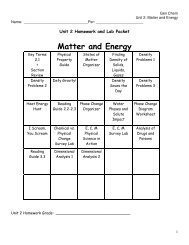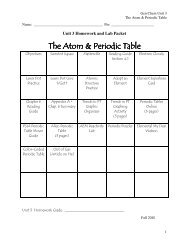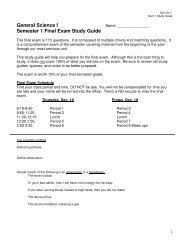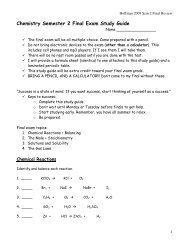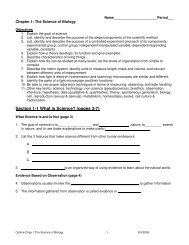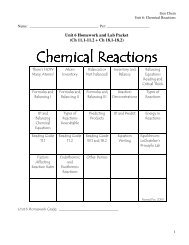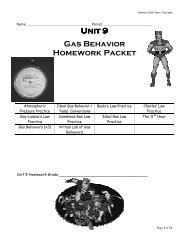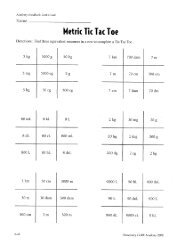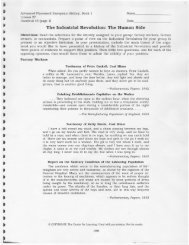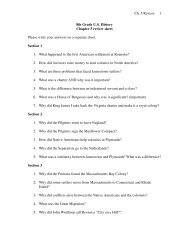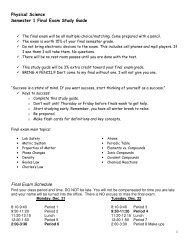Heart Dissection Guide
Heart Dissection Guide
Heart Dissection Guide
Create successful ePaper yourself
Turn your PDF publications into a flip-book with our unique Google optimized e-Paper software.
Anatomy and Physiology Revised Fall 2011Lab – Pig <strong>Heart</strong> <strong>Dissection</strong>IntroductionThe heart is a four-chambered double pump that creates the pressure necessary tocirculate the blood. It is about the size of a clenched fist and has the shape of a bluntcone. It is located in thoracic cavity, with the base (top) of the heart shifted toward theright clavicle (collar bone) and the apex (pointed bottom) directed inferiorly, anteriorlyand shifted to the left side of the chest. The heart is enclosed in a loose fitting sac calledthe pericardium.The two superior chambers of the heart are called atria (atrium is singular). They receiveblood from the body via veins. The right atrium receives blood from the upper and lowerbody via the superior and inferior vena cavae. Is this blood deoxygenated or oxygenated?___________________ The left atrium receives blood from the lungs via the pulmonaryvein. Is this blood deoxygenated or oxygenated? _______________________________The two atria are separated from each other by a thick wall of muscle called theinteratrial septum. The two inferior chambers are the ventricles. The ventricles pumpblood out to the body via the arteries. The right ventricle pumps blood to the lungs via thepulmonary trunk which branches into pulmonary arteries. Is this blood deoxygenated oroxygenated? __________________________The left ventricle pumps blood to the bodyvia the aorta. Is this blood deoxygenated or oxygenated? _________________________The two ventricles are separated from each other by a thick wall of muscle called theinterventricular septum.Blood flow through the heart is from the atria to the ventricles. Blood is prevented fromflowing backward by the tricuspid and mitral (bicuspid) valves located between the atriaand the ventricles. Blood does not flow back into the ventricles after it has been pumpedout because of the pulmonary and aortic semilunar valves.Objectives:In this laboratory exercise, you will be able to:a. Identify the basic structures of a human heart on a model and diagram.b. Understand the basic flow pattern of blood through the human heart and body.c. Dissect an adult pig heart and be able to identify the basic structures.Activities -<strong>Heart</strong> Model and DiagramA. Label the diagrams of the hearts on the next pages by matching the choices withthe appropriate structures. Note that some choices may need to be used morethan once. After you have labeled the internal heart, use red and bluecolored pencils to draw arrows to indicate the flow of blood and the oxygen levelspresent in the blood. Use available classroom heart models to help yourself asyou do so. Can you identify each heart structure on the model?Make a key here. Red = ______________ blood Blue = _______________ blood
External Anatomy of the Human <strong>Heart</strong>
Internal Anatomy of the Human <strong>Heart</strong>____ A.____ B.____ C.____ D.____ E.____ F.____ G.____ H.____ I.____J.____K.____L.____M.____N.____O.____P.____Q.____R.____S.1. aorta2. superior vena cava3. mitral (biscuspid valve)4. pulmonary trunk5. interventricular septum6. pulmonary semilunar valve7. right atrium8. pulmonary veins9. pulmonary arteries10. left ventricle11. tricuspid valve12. left atrium13. inferior vena cava14. aortic semilunar valve15. papillary muscle16. chordae tendinae
B. <strong>Dissection</strong> of the adult pig heart.Follow the directions below to dissect an adult pig heart. Note that any structuresthat are in bold are structures you should be prepared to identify on an exam.You will also be expected to understand how blood flows through the adult heart,including the purpose or function of each structure.1. Obtain a heart specimen and rinse it thoroughly to remove as much preservativeas possible. The pericardium will have been removed. Most heart diagramsshow the left atrium and left ventricle on the right side of the diagram. You mustimage the heart in the body of a person (pig) facing you. Therefore, the left sideof their heart is on their left, but since you are facing them, it on your right.2. Attempt to identify the ventral and dorsal aspects of the heart. If the heart issomewhat smashed it may be challenging. To locate the ventral side, lookclosely for a diagonal line of blood vessels that appear to divide the heartinto two sides. The line of vessels will appear to angle downward fromyour right to your left. These blood vessels are the coronary arteries and veinswhich “feed” the heart itself and remove its waste and carbon dioxide. Theywill be imbedded in much adipose tissue. Why might the heart be coated withadipose?3. Locate the apex of the heart. It is the pointed end at the bottom. To confirm thatyou are looking at the ventral side, squeeze each half of the heart. The heart’sleft side will feel much firmer and more muscular than the right side. The leftside is stronger because it must pump blood to the entire body. The heart’s rightside will feel somewhat softer. It must only pump blood a short distance to thelungs.4. Also attempt to identify the two wrinkled (elephant-ear) flaps called auricles.These cover the atrial chambers. Their position is basically pointed in ananterior aspect. Locate a large opening into the right auricle. This the pointwhere the superior and inferior vena cava merge on the posterior side of theheart to enter the right atrium. Stick a blunt probe into the opening to enterthe atrium. The superior vena cava brings deoxygenated blood from the upperbody and the inferior vena cava brings deoxygenated blood from the lower body.5. Widen the opening from the vena cavae slightly to peer into the interior of theright atrium. The right atrium leads down into the right ventricle. Inbetween the two is the tricuspid (right atrio-ventricular) valve. Probe tosee if you can locate any of the three flaps of this valve. This valve prevents thebackflow of blood from the right ventricle into the right atrium. Carefully poursome water into the right atrium and allow it to flow into the ventricle. Slowly andgently squeeze the right ventricle to watch the closing action of the valve.
If you squeeze too hard you may get a face full of water!! Drain the water fromthe heart before continuing.6. Identify the pulmonary trunk on the anterior surface. It will be large and white.It will angle from the top (base) of the heart toward the right ventricle. Insert aprobe or one small finger into it to see how it leads outward from the rightventricle. It branches into smaller right and left pulmonary arteries to carry bloodto the lungs. These smaller arteries will have been removed. Carefully cut a littleway down into the pulmonary trunk on its anterior wall until you can see thepulmonary semilunar valve. Probe to see if you can locate the three cup-shapedparts of the valve. This valve prevents the backflow of blood from the pulmonarytrunk into the right ventricle after the pumping action of the ventriclemomentarily relaxes. Carefully pour some water into the base of the pulmonarytrunk to see if you can observe the closing action of this valve. How does itsclosing action differ from that of the atrioventricular valve? Once again, drainthe water from the heart prior to continuing.7. Now turn your attention to the left side of the heart. Locate the left auricle andturn the heart to the posterior side. In the back of the auricle you should locatea large opening. This is the place where the pulmonary veins merge, coming fromboth right and left lungs, carrying oxygenated blood to the left atrium. As on theright side, widen the opening slightly and peer into the left atrium. It leads downand into the left ventricle. In between the two is the bicuspid (left atrioventricular)or mitral valve. Probe to see if you can locate either of the two flapsof this valve. This valve prevents the backflow of blood from the left ventricleinto the left atrium.8. Turn your attention to the top (base) of the heart. Once again locate thepulmonary trunk. Take note of another very large blood vessel that sitsjust posterior to the trunk. This is the aorta. It carries oxygenated blood fromthe left ventricle to both the upper and lower body. It may appear as one vesselbecause the two branches have been removed. (If there are still two branches onit, the left one is the left subclavian artery that carries blood primarily to the leftarm. The right branch is the right brachiocephalic artery that quickly branchesinto the left carotid artery, carrying blood to the left side of the brain; the rightcarotid artery, carrying blood to the right side of the brain and the right subclavianwhich carries blood primarily to the right arm. In a human the left carotidattaches directly to the aorta, creating three main branches off the vessel.) Onceyou have located the aorta, insert a probe or one small finger into it to see how itleads outward from the left ventricle. Carefully cut a little way down into theaorta on its anterior wall until you can see the aortic semilunar valve. Probe tosee if you can locate the three cup-shaped parts of the valve. This valve preventsthe backflow of blood from the aorta into the left ventricle after thepumping action of the ventricle momentarily relaxes.
9. Once again at the right atrium of the heart, insert sharp scissors into the openingfrom the vena cavae and cut through into the right atrium on the anterior surface.Cut carefully down and into the right ventricle. Gently pry the heart apart. Fromthis new viewpoint, attempt to locate the three flaps of the tricuspid valve. Notethe string-like chordae tendinae and the bumps of papillary muscle to whichthey are attached. Place a blunt probe under one of the chordae tendinae andgently tug to see how strong these strands of tissue are.10. Find the place on the pulmonary trunk where you began to cut down in order tosee the semi-lunar valve. Continue the cut down and into the right ventricle.Using a probe, attempt to model the flow of blood from vena cavae to thepulmonary trunk. Name each structure in the flow pattern.11. Once again at the left atrium of the heart, insert sharp scissors into the openingfrom the pulmonary veins and cut through into the left atrium on the anteriorsurface. Cut carefully down and into the left ventricle. Gently pry the heart apart.From this new viewpoint attempt to locate the two flaps of the bicuspid or mitralvalve. Note the string-like chordae tendinae and the bumps of papillary musclethat are also present to hold this valve in place.12. Find the place on the aorta where you started to cut down in order tosee the semi-lunar valve. Begin to continue the cut down and into the leftventricle. As you cut deeper down the aorta, probe around and you may be ableto locate small openings in two of the cups of the aortic semi-lunar valve that arethe locations of the branching of the coronary blood vessels traveling to nourishthe heart muscle itself. Using a probe attempt to model the flow of blood frompulmonary veins to the aorta. Name each structure in the flow pattern.13. Review all of the structures you have studied on the heart and store it in a baggieas directed by your instructor.



